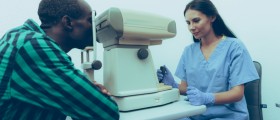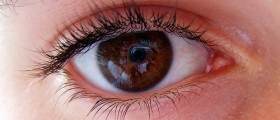
Diabetes mellitus is known to complicate and cause damage to the retina of the eyes. This condition is known as diabetic retinopathy and it affects about 80% of diabetic patients. In left untreated, diabetic retinopathy may lead to blindness. Duration of diabetes is the most important factor for the development of this medical condition, especially duration of period of high blood sugar. Too much glucose (blood sugar) in the blood is known to damage small blood vessels in retina and negatively affect the vision. Blood vessels usually start to leak and bleed and they may also be the cause of retina edema. Since there is no sufficient oxygen through those leaky blood vessels, retina may be damaged and start to grow some abnormal blood vessels.
Types of Diabetic Retinopathy
There are three types of this condition: non-proliferative retinopathy, maculopathy and proliferative retinopathy. Non-proliferative or background retinopathy is characterized by small swelling of the blood vessels, known as microaneurysms. There are also some small yellow patches (fat from the blood) and some bleeding on the retina. This problem is not known to affect the sight but it must be closely monitored by an ophthalmologist. Maculopathy affects the part of retina responsible for central and detailed vision (macula). This condition has similar symptoms as non-proliferative retinopathy, but these changes happen in macula. Patients diagnosed with maculopathy may have troubles with seeing fine details and reading.Proliferative retinopathy is known to cause blockage of retina’s blood vessels. At the same time, retina may grow some new abnormal blood vessels, which can bleed or cause retinal detachment, leading to vision reduction and even glaucoma or blindness.Who’s at Risk to Develop Retinopathy?
Certain people might be exposed to greater risk to develop retinopathy. This includes patients who don’t control or have poor control over their blood sugar level. Too much blood sugar for too long is proven to be responsible for development of this eye problem.Presence of protein in urine and high cholesterol in the blood may also be factors known to contribute to retinopathy. Hypertension (high blood pressure), pregnancy and duration of diabetes have been identified as contributing factors as well. Number of microaneurysms is also known to affect retinopathy.
Diabetic Retinopathy Treatment
Background retinopathy doesn’t require any treatment but regular eye checkups to prevent possible problems. Maculopathy is usually treated with lasers or it may not need treatment at all. New treatment for maculopathy includes intravitreal anti VEGF injections. Proliferative retinopathy requires laser treatment to regress abnormal blood vessels.

















Your thoughts on this
Loading...